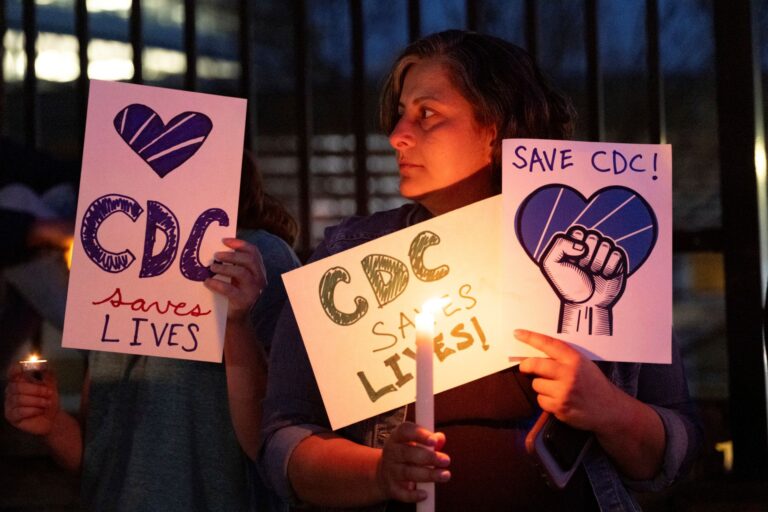Who would have thought ten years ago that Quebec sovereignty would return to the forefront of political debate, after the Parti Québécois (PQ) had been fading steadily since the 1995 referendum?
In 1998, the PQ won the support of 43 per cent of voters. By 2008, that support had dropped to 35 per cent and, by 2018, to just 17 per cent. In the 2022 provincial election, the PQ took only 15 per cent of the vote and three seats — the worst result in its history. The threat to Canadian unity seemed to have evaporated. The idea of another referendum disappeared from the radar, and the constitutional question appeared to be settled.
A cause without a vehicle
Today — and for nearly two years now — the PQ has been back on top in the polls, with 35 per cent support, nine points ahead of the Liberals, and a new referendum is on the agenda. The sovereigntist project seems to have the wind in its sails again.
What’s fascinating is that, despite the PQ’s ups and downs, support for sovereignty (36 per cent) has remained relatively stable for 20 years, as if the vehicle and the cause have gradually separated.
Between the diehard sovereigntists and the staunch federalists sits a camp of ambivalent people — voters who sometimes lean sovereigntist, as during the sponsorship scandal of 2005, and sometimes federalist. They formed the electoral base of François Legault’s Coalition Avenir Québec (CAQ) over the past decade.
At once sovereigntist and federalist, these ambivalents are substantial. That helps explain why many Quebecers admired the polar opposites of René Lévesque and Pierre Trudeau. This ambivalence gave rise to hybrid or even ambiguous proposals for Quebec’s status: in 1980, sovereignty-association; in 1995, sovereignty-partnership.
The foundations still hold
The ambivalent position also explains the swings in support for sovereignty since the 1960s, notably after the failure of the Meech Lake Accord. Following the 1995 referendum defeat, they put their nationalism into hibernation. English Canada would be wrong to assume they have become fervent federalists.
The sovereigntist conviction rests on enduring, fundamental arguments: just look at a map — Quebec could clearly be a country. Its territory, resources, population, and economy could sustain independence.
Even federalists like Jean Charest and Philippe Couillard have acknowledged as much. International law and many precedents affirm the possibility. The Supreme Court recognized the right. And Robert Bourassa, in his historic speech after the failure of Meech on June 22, 1990, put it eloquently:
“English Canada must clearly understand that, regardless of what is said or done, Quebec is, today and always will be a society that is distinct, free and able to assume its destiny and development.”
After all, Quebec is a nation — with its own language, culture, and identity — something the federal Parliament itself has recognized.
From ideal to majority desire
The question PQ strategists must now grapple with is this: how can a legitimate, achievable ideal be transformed into a majority desire — a firm, shared will? How can they move the ambivalents?
The PQ’s current lead should give the party no cause for complacency. Its resurgence owes much to the fatigue of François Legault’s government, the mishandling of key issues, the slow rebuilding of the Liberals, and the internal turmoil of Québec solidaire. The PQ’s main mission did not drive its revival.
Can the PQ advance the cause of sovereignty enough in the space of a single mandate to win a third referendum? That’s far from certain. Five major challenges stand in the way:
1. Present-day issues. How can the constitutional question be tied to Quebecers’ immediate concerns? More concretely, what difference would sovereignty make on the environment, inflation, or artificial intelligence?
It is possible the case can be made, but it hasn’t been made yet. Many of the most pressing issues — health care, housing, education — fall largely under provincial jurisdiction. There’s no magic wand, but can the PQ show that sovereignty would truly change the picture? It’s a major challenge.
2. The crisis of the Quebec model. The sovereigntist project is rooted in a highly interventionist state — a foundation now weakened. As economist Pierre Fortin wrote in 2011: “Our feelings toward the Quebec state have cooled considerably over time. In 1960, it carried all our hopes. Today, it has become omnipresent and is a source of much frustration.”
Expanding state power no longer inspires. In 1995, the Quebec state still seemed like a positive lever; today, it’s under scrutiny amid deficits, public debt, failing services, bureaucratic delays and disastrous management.
Quebecers are no longer sure they govern themselves well. “What’s the point of having all the powers?” some might ask. Overcoming this deep skepticism will be a major challenge for the independence movement.
3. The roots of the sovereigntist cause. In the 1960s and 1970s, as Baby Boomers came of age, French-speaking Quebecers were still disadvantaged — poorer, less educated, absent from corporate boards, tenants rather than owners.
As Félix Leclerc sang in 1972:
I have a son stripped bare / as was his father / Water carrier, hewers of wood / Tenant and jobless / In his own country / He has nothing left / but his view of the river.
That condition, poetically summed up in the original French lyrics, is no more. Within the Canadian framework — and by using the provincial powers it long neglected — Quebec has nearly erased the economic gap of francophones. The “grapes of wrath” that once fueled change are gone.
4. The foundations of Quebec nationalism. French language and culture are under strain: Quebec music, film, and television are ignored or dismissed. Some people view national history with suspicion regarding Indigenous peoples and minorities. Some believe the land was “stolen” and that Quebecers should feel collective shame for their colonial past.
Systemic racism is seen by some as central to institutions. Minorities, in this view, are the new “hewers of wood and drawers of water,” more vulnerable than the white majority. Meanwhile, many francophones casually speak English in their day-to-day lives, and their demographic weight continues to decline.
How can the PQ, in just a few years, counter these deep internal trends, rekindle national pride, and nurture a firm will to build an independent Quebec?
5. Geopolitical challenges. The final challenge concerns the geopolitical tremors following Donald Trump’s re-election. Even if his term ends in January 2029, U.S. tariffs and retreat from trade could persist. Protectionism is rising elsewhere too.
This is no small matter. Bernard Landry and Jacques Parizeau passionately defended free trade, believing that a smaller political territory would not limit access to markets. In today’s international climate, many Quebecers may prefer to remain in Canada. Time will tell whether this realignment endures.
The risk of promising a referendum
Leaping over one of these hurdles may be possible; overcoming several of them to spark a mass movement may be reckless or foolhardy — even some sovereigntists might say.
Maintaining a promise to hold a referendum in the next term could backfire on the PQ. Its leader, Paul St-Pierre Plamondon, speaks of independence without adding “association” or “partnership.” That clarity is admirable but adds even more difficulty.
Once in power, could the PQ truly reverse these broader trends and win hearts and minds? Unlikely. Today, political honeymoons are short, and power takes a heavy toll. Building consensus, or even a simple majority, is especially difficult in an era of fragmented public space, fading shared references, and widespread suspicion of authority.
Risk and a lose-lose situation
The rise of nationalism in Europe and the United States, like the backlash to globalization, could open new opportunities for Quebec nationalists. But to take that path — one tilted to the right — the PQ would have to venture into risky terrain, alienating much of its centre-left base.
It could also count on separatist rumblings in Alberta or Ottawa’s missteps to shake up the Canadian federation. But that’s an unpredictable bet — and it cannot rely on the spectacular failures of federal reform as with the accords of Meech Lake in 1990 or Charlottetown in 1992.
How could Paul St-Pierre Plamondon, who has built his popularity on honesty, frankness and coherence, abandon his referendum promise without seeming like any other politician? It’s a dilemma worthy of Sophocles.
Democratizing the referendum tool
There may be another way, one long dismissed by nationalists: the popular initiative referendum (PIR). Used in Switzerland, and a democratic feature in Germany, Italy, New Zealand, Mexico and most U.S. states, this mechanism allows citizens to trigger a referendum themselves. Alberta has it too. Mario Dumont, then leader of the opposition Action démocratique du Québec, proposed such a law in 2000, but it went nowhere.
By adopting such a measure, the PQ could separate the referendum issue from partisanship — and ensure mobilization before a campaign began. The PQ leader could free himself from the promise of holding a referendum while pledging to democratize the process of having one. Redefined this way, the independence option would remain alive, available, and usable in the short, medium or long term.












